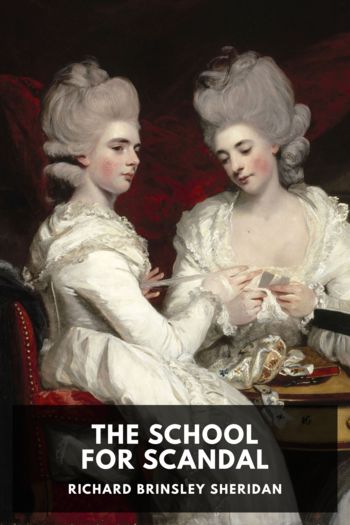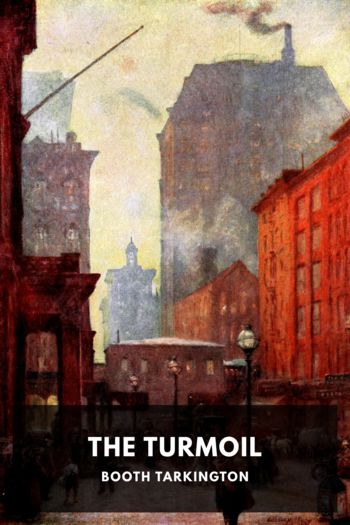Malaysian Maverick: Mahathir Mohamad in Turbulent Times Barry Wain (grave mercy .TXT) 📖

- Author: Barry Wain
Book online «Malaysian Maverick: Mahathir Mohamad in Turbulent Times Barry Wain (grave mercy .TXT) 📖». Author Barry Wain
There followed a succession of noteworthy high-rises, including the Putra World Trade Centre, which housed UMNO's headquarters, the "curvaceous" head office of the Pilgrims Fund Board, and next to it the "uniquely Malaysian design" of the National Equity Corporation headquarters.[42] The Kuala Lumpur Tower, used for communications and containing a revolving restaurant, featured an antenna that soared 421 metres into the tropical sky. On the strength of visits to "nearly every country in the world", Dr. Mahathir expressed the view that it was the most beautiful tower ever built.[43]
They were heady days for Malaysia's leading architects, a rare chance to let their imaginations soar. One, Ken Yeang, observed that few places had ever seen building of such magnitude and scale. "In the last ten years we have built more, in terms of square footage, than in the last one hundred years...," he said.[44]
The crowning glory was the 88-storey Petronas Twin Towers, designed by the late Cesar Pelli, the celebrated Argentinian-born American who created New York's World Financial Centre and Canary Wharf in London. With a steel and glass facade evoking traditional Islamic art and architecture — the floor pattern was based on an eight-point star, reduced from 12 points at Dr. Mahathir's suggestion — the building was engineered to the most demanding international standards.[45] The elegantly proportioned, identical slender towers rose in the heart of the capital, linked by a double-decker skybridge at the forty-first and forty-second floors. They were anchored in a six-level, crescent-shaped shopping mall, part of a fully-integrated town called the Kuala Lumpur City Centre, with hotels, condominiums and a public park.
Pelli did not set out to collect the "world's tallest" tag with the twin towers, until Dr. Mahathir casually raised it with him over tea one afternoon in 1994.[46] It would take an additional 16 metres to match the 443-metre Sears Tower in Chicago. With construction well underway, Pelli frantically re-did the mathematical calculations and deemed it doable, not by increasing the number of floors, but by raising the height of the "pinnacles".[47] From tip to toe, the completed building was almost 452 metres, and it gave Malaysia the excuse to claim another world record — for the continuous pouring of concrete.[48]
Although the twin towers ran into a definitional dispute over being the tallest building, they were undoubtedly the highest twin towers, and they became identified with Kuala Lumpur as much as the Opera House is with Sydney or the Eiffel Tower with Paris. Sean Connery and Catherine Zeta-Jones swung beneath the skybridge in the Hollywood movie Entrapment. Certainly no regional city could boast such a landmark, most definitely not serious and successful Singapore, which preferred safe and sensible structures. "We lack a daring, pioneering spirit," lamented a Singaporean architect as his government turned down a phantasmagorical wave-like design for an integrated resort and casino proposed by acclaimed Canadian-American architect Frank Gehry.[49] Dr. Mahathir backed the twin towers precisely to convey that spirit. "Indeed, they stand out prominently against the skyline of Kuala Lumpur to symbolize courage, ingenuity, initiative and determination, energy, confidence, optimism, advancement and zest of a nation that will bring worldwide recognition and respect to all Malaysians," he said at the opening. It was 31 August 1999, the last national day of the century, the last of the millennium.
As if to pre-empt the inevitable comments about an edifice complex, Dr. Mahathir conspicuously forbid his name to be attached to any physical feature, man-made or natural. The only trace while he held office was his old MAHA Clinic in Alor Star, which retained the name long after he had abandoned medical practice permanently. "It would be an act of arrogance if I were to allow buildings and so on to be named after me," he said on more than one occasion.[50] Asked bluntly by the foreign press if "all the dams, tall buildings and new cities" appearing in Malaysia were "merely monuments to Mahathir," he replied, "I really don't need any monuments. These are necessities, and they are necessities we can afford."[51]
Dr. Mahathir would have been more persuasive if he had not encouraged, or at least permitted, the growth of a personality cult.[52] In 2001, his political secretary urged institutions of higher learning to offer a course on the thoughts of the prime minister, a comment considered so noteworthy it was disseminated by Bernama, the national news agency.[53] Other supporters made at least two attempts to obtain a Nobel Prize for him. At the instigation of Minister of Science, Technology and Environment Law Hing Dieng, a fairly high-powered committee in 1999 prepared a formal nomination document that was submitted to the Nobel Foundation in Oslo. And in 2006, Dr. Mahathir's son Mukhriz called a meeting of prominent Malaysians with the idea of building a case for his father to be awarded the Nobel Peace Prize.[54] While nothing came of these efforts, other initiatives also sought to accord Dr. Mahathir exceptional, personal status. In 1999, a CD entitled "CEO Malaysia Inc.", was made of his major speeches, he featured in a 14-part television dramatization of his life, had an UMNO seminar devoted to "The Thoughts of Dr. Mahathir", and had an album of ten patriotic songs released in his honour. He also accepted a Rotary award as Man of the Millennium.[55]
While Dr. Mahathir could justify much of the infrastructure to accelerate economic development, he was less than convincing when claiming as essential the colossal investment in skyscrapers and some of the other creations. As his other comments testified, the buildings were supposed to be more than utilitarian. They were meant to impress, to take the breath away and engender awe. Opponents who carped that the money should have been spent instead on education, health, welfare, poverty reduction, public





Comments (0)